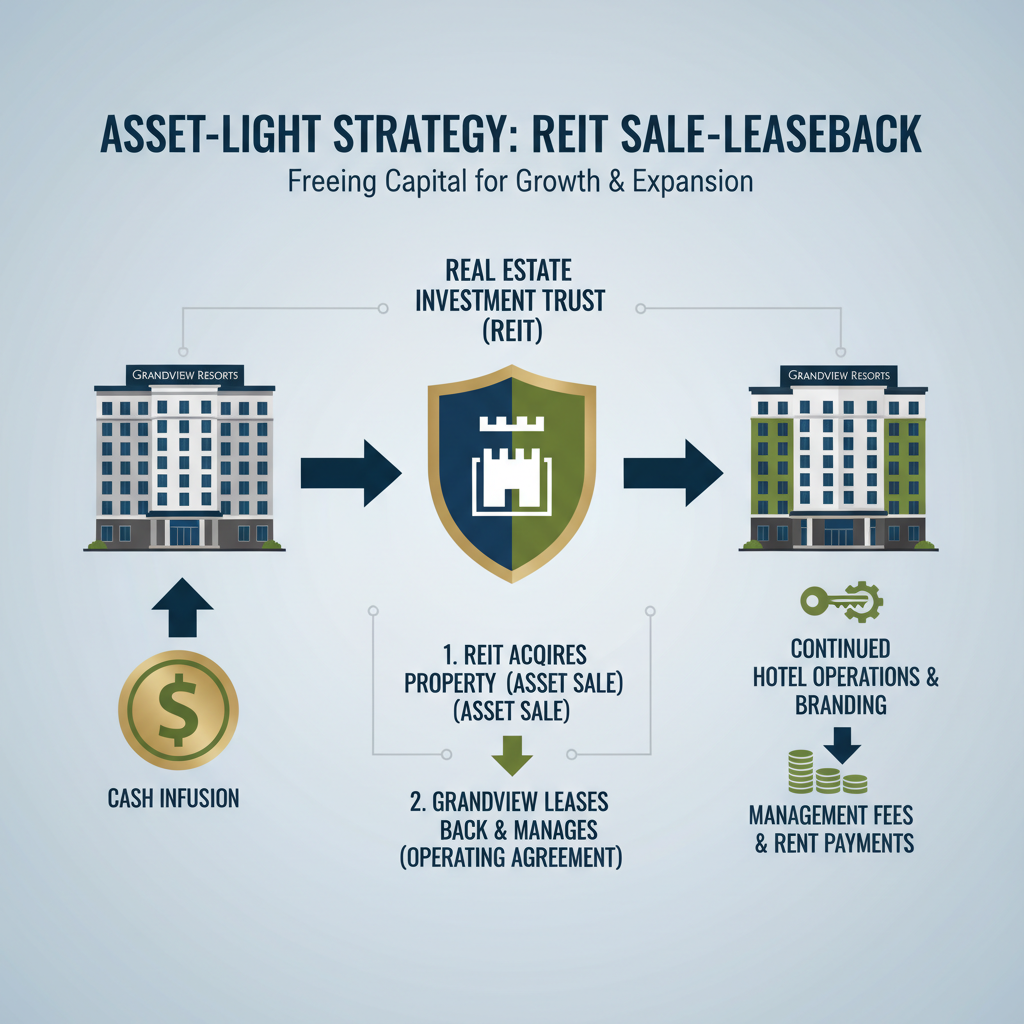Strategies for Sustained Growth: An Asset-Light Approach for U.S. Hotels
In today’s dynamic hospitality landscape, U.S. hotel managers are constantly seeking innovative strategies to optimize profitability and ensure long-term growth. One approach gaining significant traction is the “asset-light” model. This strategy focuses on minimizing capital expenditure on real estate by shifting towards franchising and management contracts.
Understanding the Asset-Light Model
The asset-light model involves reducing ownership of hotel properties and instead emphasizing brand management and franchising. This allows hotel companies to generate revenue through franchise fees, management fees, and royalty payments, rather than relying solely on operational profits from owned properties. This approach reduces capital intensity and improves return on invested capital (ROIC).
Benefits of Franchising
Franchising offers several key advantages. It allows for rapid brand expansion with minimal capital investment. Franchisees bear the responsibility for property maintenance, renovations, and operational expenses, reducing the financial burden on the franchisor. This decentralized model fosters entrepreneurial spirit and local market expertise, enhancing the guest experience at individual properties.
Management Contracts: A Strategic Partnership
Management contracts provide another avenue for asset-light growth. Under this arrangement, a hotel company manages a property owned by a third party, receiving management fees based on revenue and/or profitability. This approach leverages the hotel company’s operational expertise, brand recognition, and marketing capabilities without requiring direct capital investment in real estate. It allows for focused resource allocation and strategic expansion.
Maximizing Earnings Potential
The asset-light strategy can significantly enhance earnings potential. By reducing capital tied up in real estate, companies can allocate resources to other areas, such as brand development, technology upgrades, and customer loyalty programs. This leads to increased brand value, improved guest satisfaction, and higher revenue per available room (RevPAR). Moreover, it allows hotel companies to capitalize on growth opportunities in emerging markets and diversify their portfolios without significant capital risk.
Key Considerations for Implementation
Successfully implementing an asset-light strategy requires careful planning and execution. Establishing strong relationships with franchisees and property owners is crucial for ensuring brand consistency and operational excellence. Robust training programs, ongoing support, and effective communication are essential for maintaining quality standards and delivering exceptional guest experiences. Furthermore, hotel managers should closely monitor market trends, adapt their strategies accordingly, and invest in innovative technologies to stay ahead of the competition.
Source: seekingalpha.com




